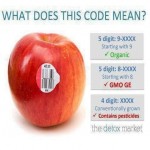Preparing healthy meals for our families has become rather complicated. Recently I hosted a Food Fact Forum with guest speaker Shannon Faunt, Dietician and owner of Zerbos Health Food Store to help clear up misconceptions. It is impossible to sum up a 3 hour evening in a few sentences. Instead, I’ll review key topics discussed throughout the summer.
Today’s topic: Genetically Modified Organisms (GMOs)
In theory, GMO’s are a great idea because it reduces the need to apply fertilizers, herbicides and/or pesticides after planting. This reduces time, fuel and additional strain on the land. My concern is the lack of research into potential side affects in humans consuming GMO’s.
The four major GM crops grown in the US are corn, soy, cotton and canola. GM seeds have their DNA genetically engineered with bacterial genes to allow crops to survive deadly doses of herbicides giving farmers flexibility in weed control. Additionally, some corn and cotton varieties are engineered to produce a pesticide in every cell. Their DNA contains a gene which produces a natural insect-killing poison called Bt-toxin. And here lies the problem. If the seeds contain these bacterial genes, aren’t we ingesting them when we eat the final product?
The consensus among FDA scientists in the 1990s was that GMOs were inherently unsafe and could lead to toxins, allergens, new diseases and nutritional problems. No long-term studies have been conducted to date and hence, long term health hazards of ingesting these herbicides and pesticides are unclear. I will note Europe has banned the use of GMOs for food destined for human consumption.
Another concerning fact is that the FDA’s deputy commissioner for the Office of Foods, Michael Taylor was formerly the VP of Public Policy for the biotech giant Monsanto. Taylor is the main authority behind the FDA’s rBGH labeling guidelines, posing potential conflicts of interest.
So what can we do? Demand better labeling for our foods, read labels and buy “clean” and organic when possible. More information can be found at www.The Non-GMO Project.com, and GMO food labeling news. Next month;Food Facts -What’s the deal with soy .


 Name: Gina Adams-Levy
Name: Gina Adams-Levy